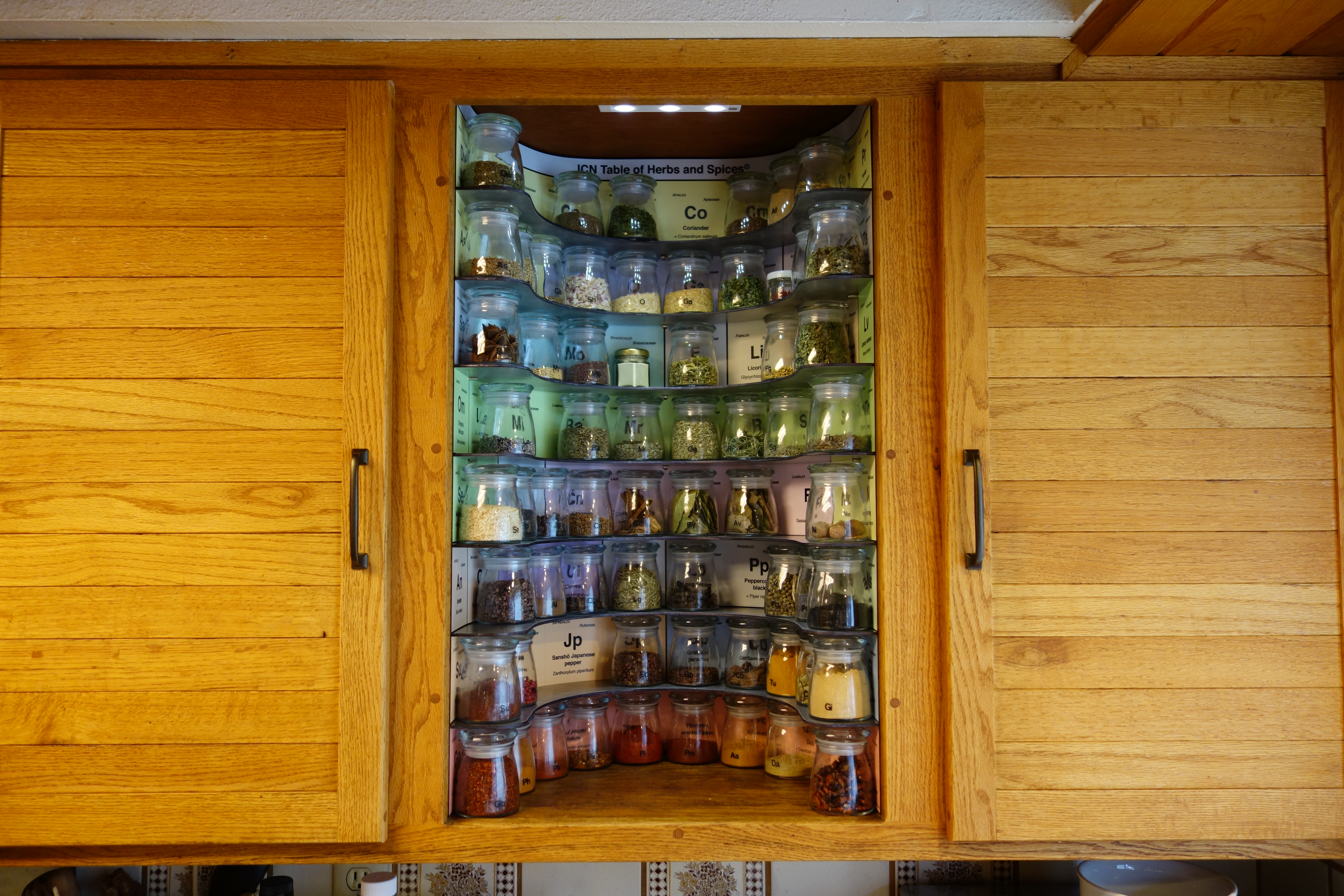My old spice drawer had many issues:
– out of space
– tins not airtight
– arbitrary alphabetical organization
– no labelling for spice-impaired
– selection had grown from base pantry ingredients to a “collection”
Research led to a better organizational principle: botanical taxonomy as in Order-Family-Genus-Species, per the International Code of Nomenclature of algae, fungi and plants, 2012 (the Melbourne code); and International Code of Nomenclature for Cultivated Plants, 2010.

I did have a doorless kitchen cabinet available, 11”d x 17”w x 30”h, after removing little-used wine shelves.
My compact “periodic” table formed the organizational backdrop for the spice rack. This graphic is actually a spreadsheet in Apple’s Numbers app. Here, have it (PDF download).





















